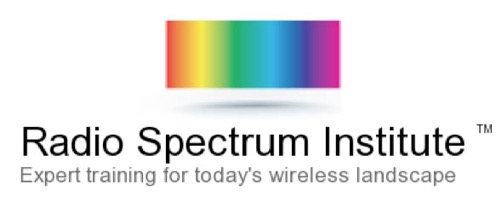Mobile operators to shift from "pure Wi-Fi" to unlicensed services tied to LTE, says report
[Reprinted with kind permission of PolicyTracker,
a London-based spectrum newsletter.]
The report, "Carrier Wi-Fi and LTE-U 2016," predicts a "decisive transition" from "pure Wi-Fi" to the tying of unlicensed services to LTE in various ways.
Mobile operators have historically invested in significant Wi-Fi networks, said analyst Kyung Mun in the report. Investment in unlicensed spectrum is likely to increase, but it will be redirected toward licensed assisted access (LAA), LTE Wi-Fi aggregation (LWA) and LTE WLAN radio level integration with IPsec tunnel (LWIP), he said.
Some of the new funding will be coupled to small cells, with multiple business models emerging as companies, carriers and over-the-top players look to capture end-users. "The competition for unlicensed spectrum use via Wi-Fi or LTE-U is a reflection of the competitive dynamics of the different types of operators," Mun said.
Around 80 per cent of mobile data is carried over Wi-Fi today, but that figure will rise to at least 90 per cent by 2020, said Mobile Experts analyst Joe Madden. Unlicensed data traffic tied to LTE control channels "will greatly improve on ease of use, and will be far more reliable than Wi-Fi services," he said. Operators will invest because hybrid combinations of LTE and unlicensed wireless can be as low-cost as Wi-Fi and as dependable as LTE.
"We believe many mobile operators are motivated to more effectively leverage the unlicensed spectrum via LWA/LWIP or LTE-U/LAA technologies, and the use will be driven by availability or handsets that can take advantage of these technologies as well as necessary infrastructure investment," Mun told us. Handsets that can take advantage of these features "will come to market in 2017 based on our supply check".
"Pure" unlicensed spectrum better?
The report asserts that most data being carried over unlicensed spectrum by 2020 will do so via a tie-in to LTE and sharing of licensed bands, said Simon Forge, director of consultancy SCF Associates. But the more likely scenarios "may be a preference for pure unlicensed spectrum, not anchored with a licensed band for aggregation," he told PolicyTracker.
That has more attractive business advantages for new entrants, and there are lots of protocols under consideration, such as MuLTEfire from Qualcomm with use of LTE packet protocols. "The interesting protocol area may be further developments in Wi-Fi with new open standards," Forge said.
But the key point is that there is pressure for the extension of unlicensed swathes of spectrum through the adoption of new licence-exempt bands, most usefully in the sub-1 GHz range. The question facing the "world's billions" is how soon that could happen: "Possibly not too soon but probably before 2030," Forge said.
Compatibility issues unresolved
The report appears to say that transition to aggregations of Wi-Fi and LTE-based unlicensed services is a "done deal," said SCF Associates senior consultant Robert Horvitz. "But the compatibility tests between Wi-Fi and the various LTE variants haven't even started," he told us. Nor has there been any discussion of the practical need for a licensed anchor to manage unlicensed bandwidth. "If there's really no technical need for that - and I believe that's the case - then it's just an excuse for cellcos to claim the right to bill users for free bandwidth," he said.
Mun said compatibility tests between Wi-Fi and LTE-U had been going on for some time with various constituents, and to varying degrees in lab and field tests. The Wi-Fi Alliance is working on a draft Wi-Fi/LTE-U coexistence test plan, an effort which has been delayed several times and which is now expected to be completed in September, he said.
Meanwhile, some mobile operators and vendors are carrying out field trials while they await regulatory approval, Mun said. For the mobile operators, with licensed spectrum, the licensed anchor "provides a reliable 'control mechanism' of sorts," he told us. By conducting all control signalling via the licensed anchor, they can manage quality of service better and can use the unlicensed spectrum as a supplemental downlink when needed.
What's really needed is "close cooperation between 3GPP, IEEE and regulators to develop a consensus on rules for hybrid band sharing and aggregation (fixed/mobile converged networks that combine licensed and licence exempt band use)," said Horvitz. And if not rules, he added, then there should at least be principles concerning technical and coexistence fairness issues.•
© PT Publishing 2016





![Validate my RSS feed [Valid RSS]](valid-rss-rogers.png)

